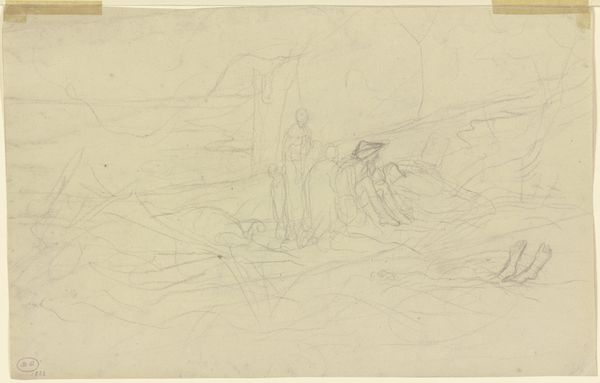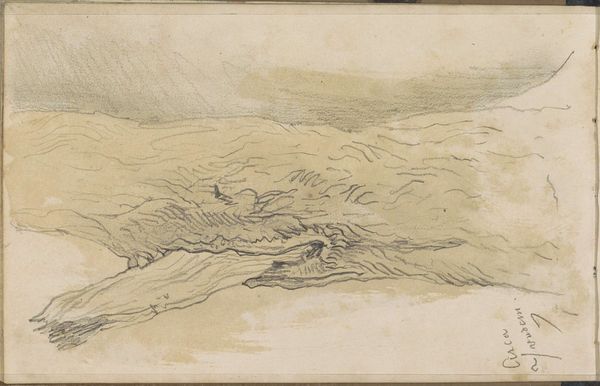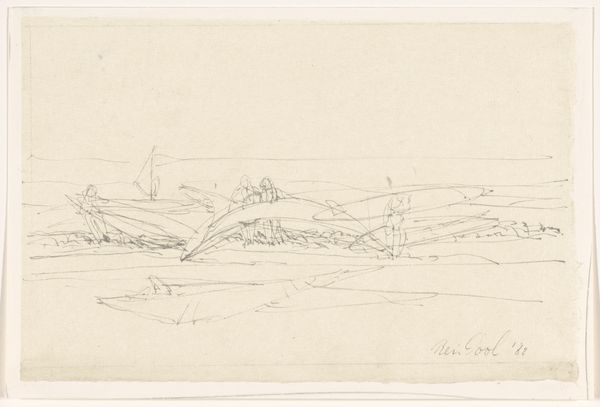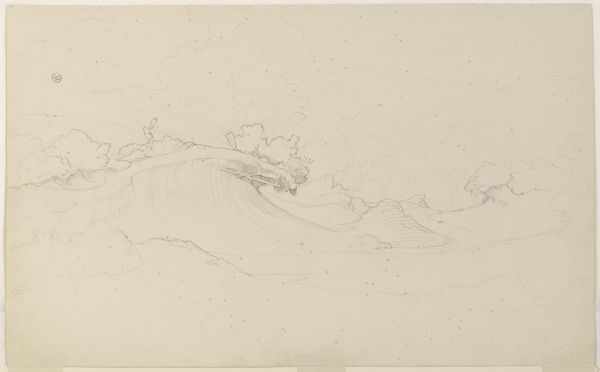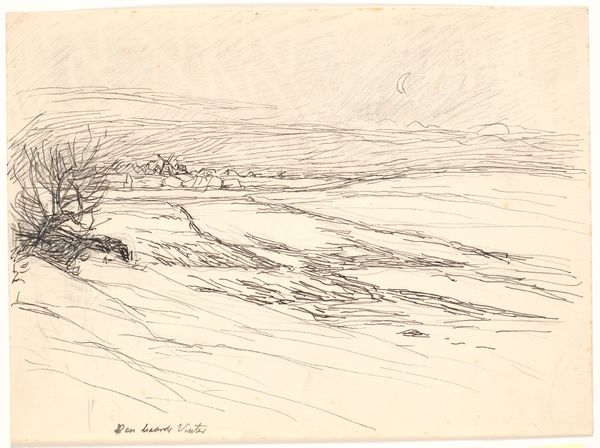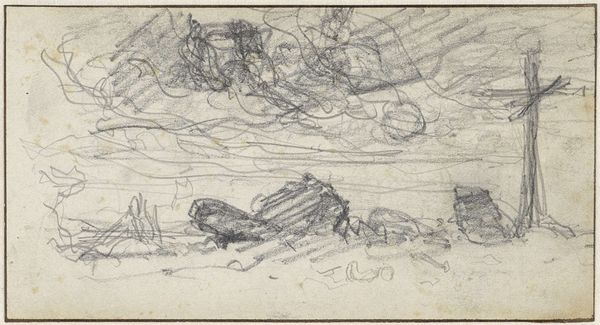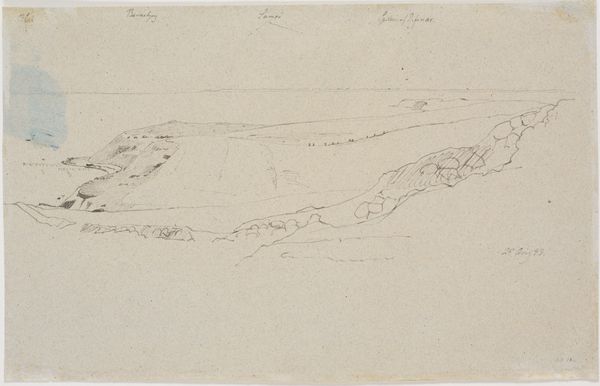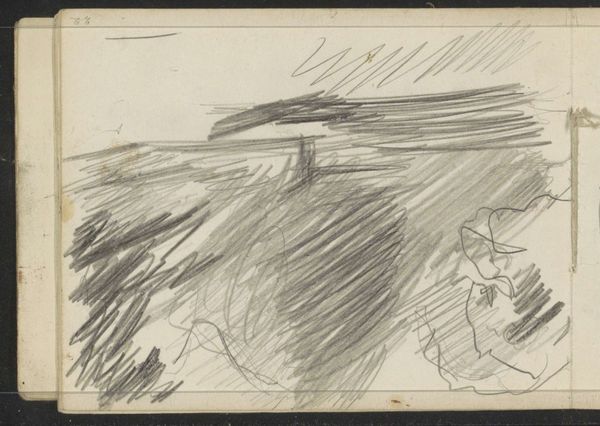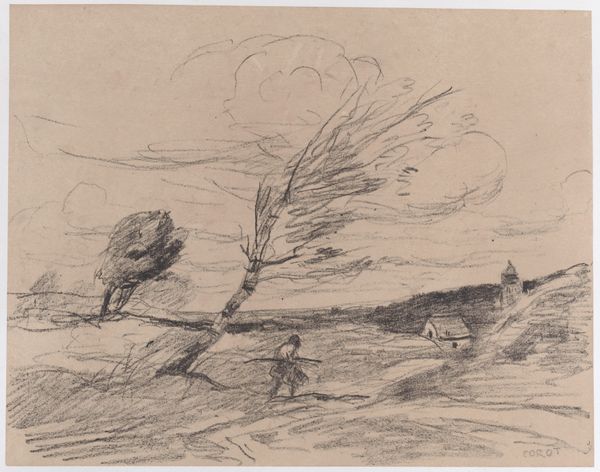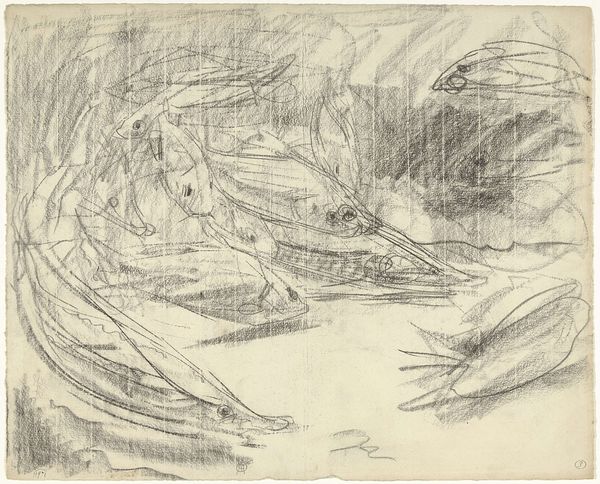
Madame Raffalowitsch als büßende Magdalena in Scheveningen 22 - 1865
0:00
0:00
Copyright: Public Domain
Curator: Here we have Victor Müller’s drawing, "Madame Raffalowitsch als büßende Magdalena in Scheveningen" from 1865, currently held at the Städel Museum. It's rendered with pencil, chalk, and ink on paper. Editor: It feels melancholy, doesn't it? The gray tones, the slumped figure partially hidden by beach grass... it whispers of introspection, or perhaps heartbreak. It's a powerful, intimate little landscape-portrait. Curator: The title certainly hints at the emotional weight. The "penitent Magdalene" reference casts Madame Raffalowitsch in a role of sorrow and repentance. This was likely meant to invoke a familiar trope in art history, imbuing the sitter with additional layers of meaning. And the seaside setting, Scheveningen, adds a raw, windswept dimension. Remember, coastal locations in art were often used to express loneliness, mortality, and sublimity during the Romantic period. Editor: So it's playing on public knowledge of Mary Magdalene and landscapes as symbols of inner turmoil, reflecting on the burden of reputation. That ocean behind her is rough. There’s an element of romantic theatricality in framing a portrait as a symbolic narrative. Is there a commentary about the societal expectations imposed on women in Müller’s portrayal? Curator: It's definitely ripe for that kind of interpretation. The poem written along the margin is interesting, it enhances that personal sentiment even further. He writes of inner torment and asks heaven, "why am I cast out and forgotten?". The sea, in a social sense, acts as the barrier of this woman who sees herself as rejected, pushing out on her as society casts her off. This isn't just a likeness; it's a character study, steeped in the prevailing mood of Romanticism and potentially engaging with feminist ideals in opposition to this period's conservative structures. Editor: It's so skillfully rendered, but there’s rawness, almost sketch-like quality which enhances the feeling that we've stumbled upon a very private moment. That single parasol seems so flimsy as an attempt to create a refuge. There's beauty in this sadness. Curator: A potent piece—revealing the public construction of feminine identity, with layers of vulnerability that I hadn’t anticipated at first glance.
Comments
No comments
Be the first to comment and join the conversation on the ultimate creative platform.
